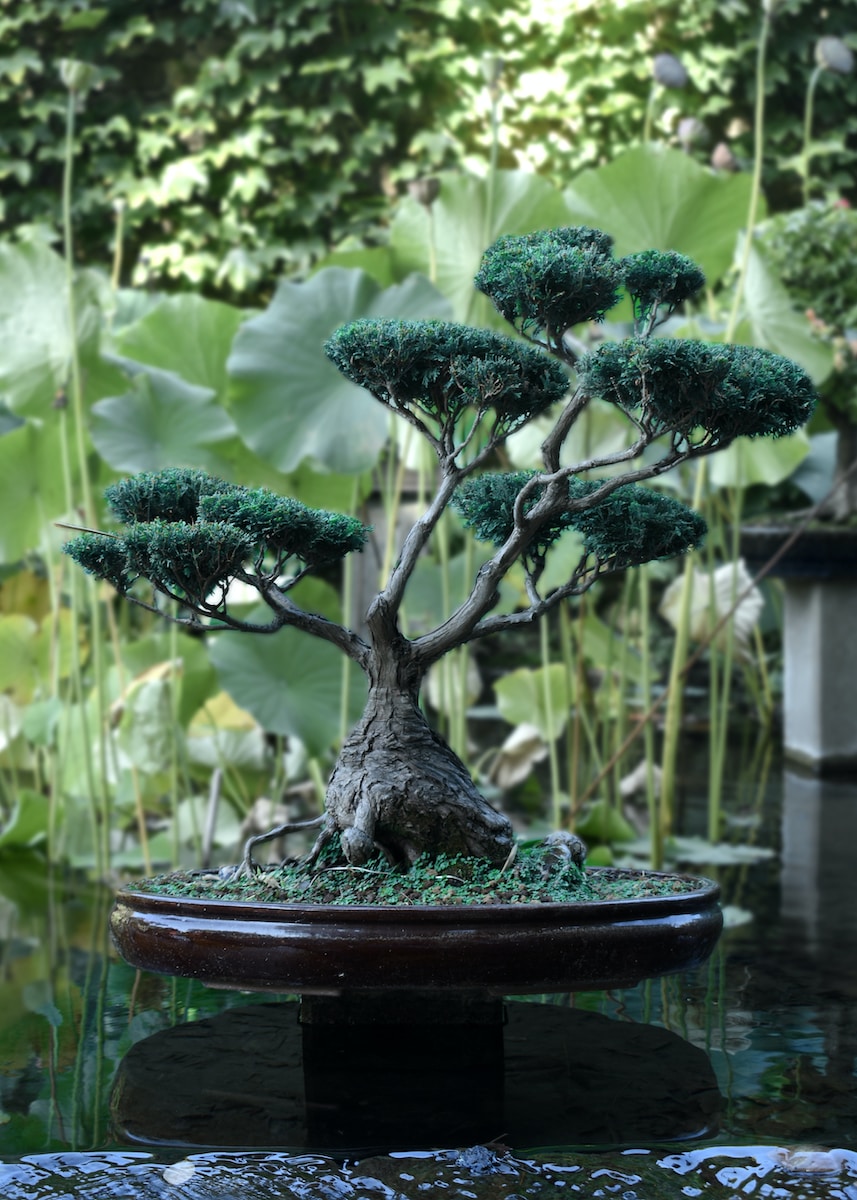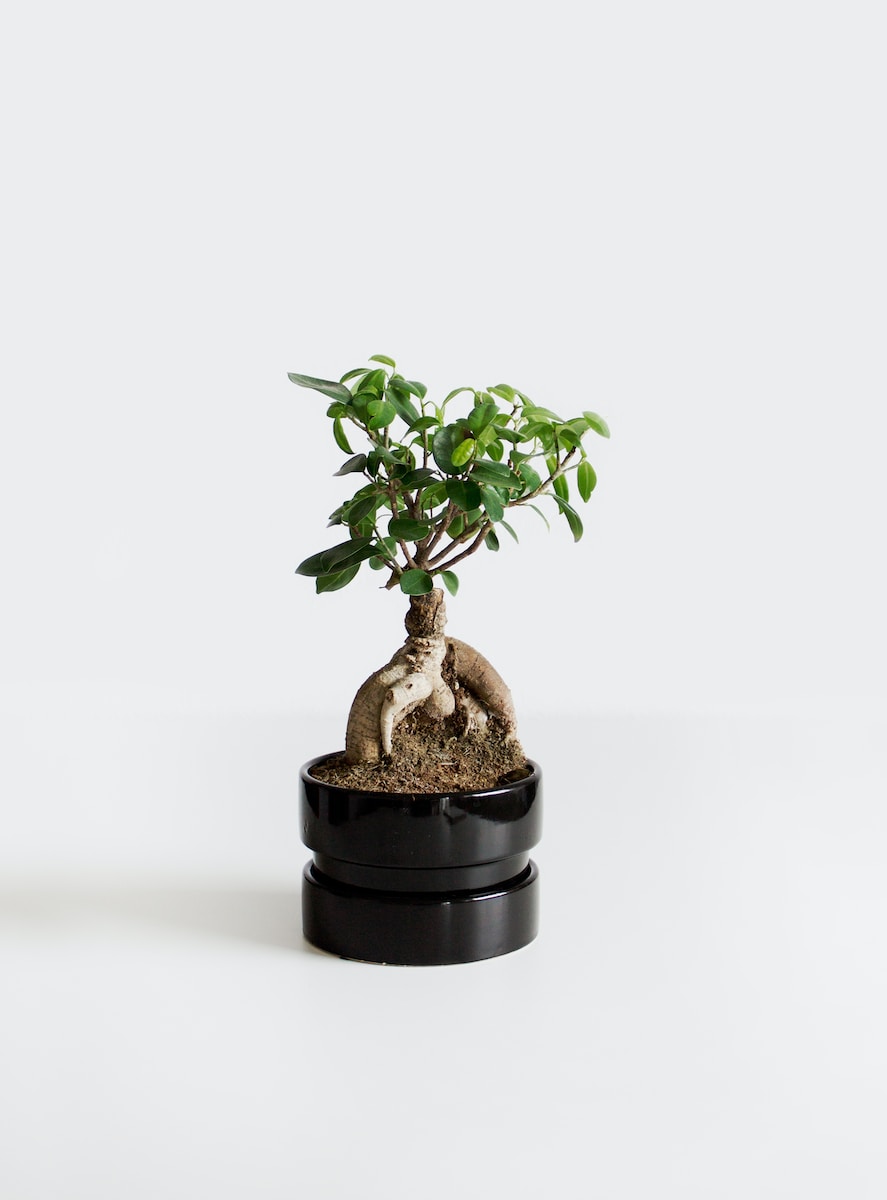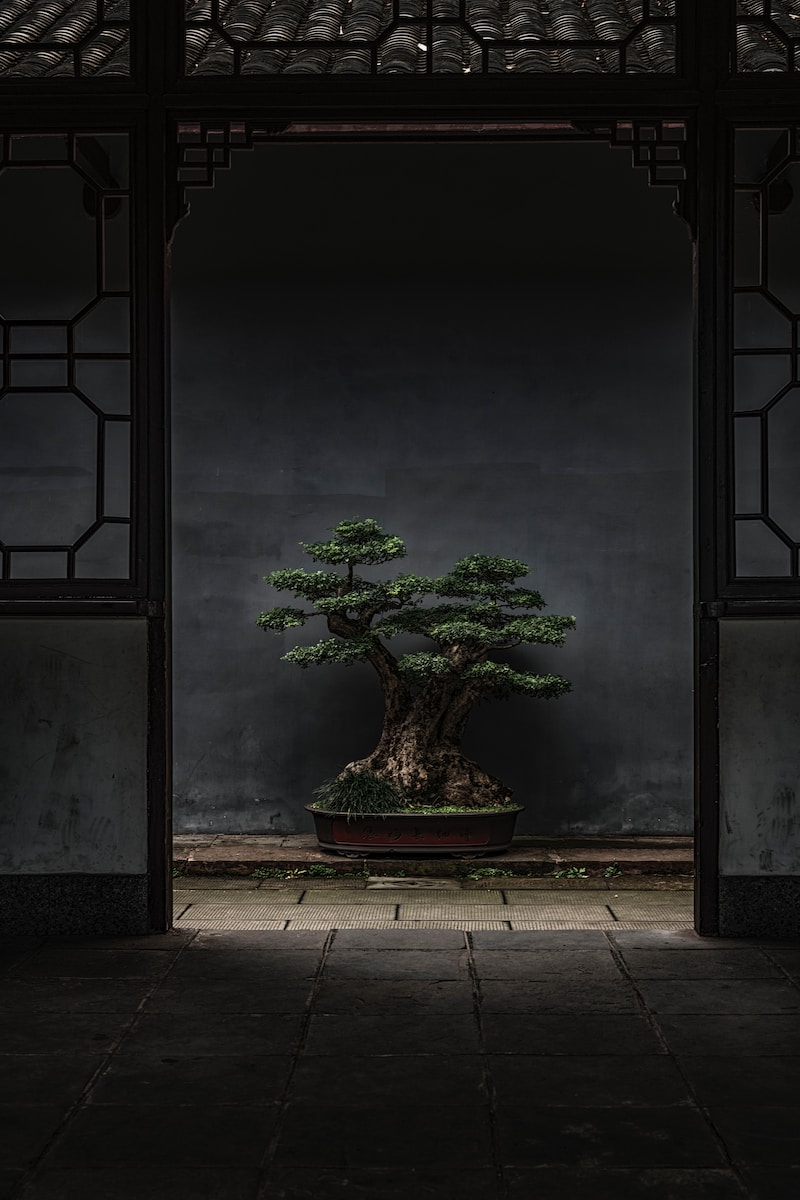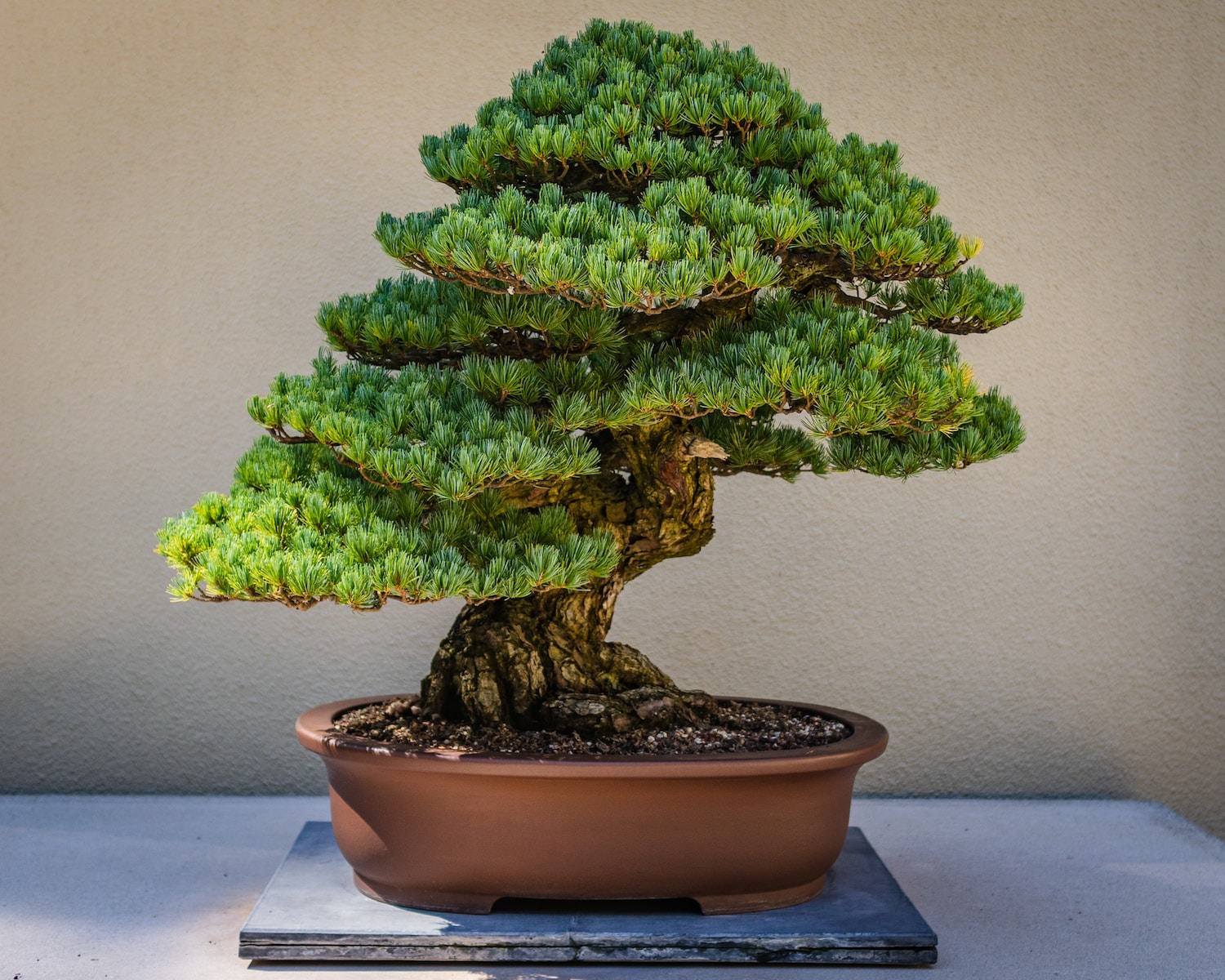
Outline
- Introduction
- Watering Bonsai Trees: The Rhythm of Life
- Fertilizing Bonsai Trees: The Nutrient Symphony
- Temperature: The Bonsai’s Chosen Melody
- The Enigmatic Soil and The Mysterious Mixture
- Harmony in Repotting: Nurturing Growth with Artful Precision
- A Bonsai’s Affair with The Pot: A Dance of Aesthetics and Harmony
- Guardians of Health: Preventative Measures for Bonsai
- The Art of Bonsai Styling: A Symphony of Pruning and Wiring
- Conclusion
Cultivating Bonsai Trees: Unraveling the Enigmatic Art
As a passionate bonsai enthusiast, embracing the cultivation of these exquisite trees requires unraveling the intricacies of “perplexity” and “burstiness” in nurturing their growth. The journey begins with comprehending the distinctive water requirements of different bonsai varieties. Each tree has its own preferences, shaped by factors such as soil type, climate, and species.
Amidst this enigmatic world, there is no steadfast schedule or formula for watering bonsai. Instead, one must gauge the dryness of the topsoil to determine the perfect timing. The frequency varies based on the plant species, soil composition, and prevailing season. During the vibrant growing season, an abundant water supply is essential, while the dormant period demands more judicious watering. The scorching embrace of sunny summer months accelerates water evaporation, necessitating more frequent replenishment.
Discovering the ideal watering moment presents us with two approaches: the tactile and the scientific. The tactile method involves gently touching the topsoil to assess its moisture content. Alternatively, one can employ a soil moisture sensor, obtainable at local garden stores, to ascertain the precise levels.
Intriguingly, the timing of watering differs during the winter dormancy season. As trees conserve their energy during this period, infrequent watering becomes the prudent choice to protect the delicate roots from potential harm.
As we traverse the seasons, the rhythm of bonsai life orchestrates a symphony of water needs. During summer dormancy, the foliage halts its growth to conserve precious water resources. Before watering, it becomes imperative to acknowledge the ambient temperature, lest we disrupt the tree’s well-being.

Watering Bonsai Trees: The Rhythm of Life
As a passionate bonsai enthusiast, embracing the cultivation of these exquisite trees requires unraveling the intricacies of “perplexity” and “burstiness” in nurturing their growth. The journey begins with comprehending the distinctive water requirements of different bonsai varieties. Each tree has its own preferences, shaped by factors such as soil type, climate, and species.
Amidst this enigmatic world, there is no steadfast schedule or formula for watering bonsai. Instead, one must gauge the dryness of the topsoil to determine the perfect timing. The frequency varies based on the plant species, soil composition, and prevailing season. During the vibrant growing season, an abundant water supply is essential, while the dormant period demands more judicious watering. The scorching embrace of sunny summer months accelerates water evaporation, necessitating more frequent replenishment.
Discovering the ideal watering moment presents us with two approaches: the tactile and the scientific. The tactile method involves gently touching the topsoil to assess its moisture content. Alternatively, one can employ a soil moisture sensor, obtainable at local garden stores, to ascertain the precise levels.
Intriguingly, the timing of watering differs during the winter dormancy season. As trees conserve their energy during this period, infrequent watering becomes the prudent choice to protect the delicate roots from potential harm.
As we traverse the seasons, the rhythm of bonsai life orchestrates a symphony of water needs. During summer dormancy, the foliage halts its growth to conserve precious water resources. Before watering, it becomes imperative to acknowledge the ambient temperature, lest we disrupt the tree’s well-being.
Fertilizing Bonsai Trees: The Nutrient Symphony
In the elegant ballet of bonsai care, fertilization commands a pivotal role in nourishing these miniature masterpieces. Bonsai’s diminutive stature impedes its roots from accessing abundant nutrients, necessitating the introduction of essential elements for optimal health and growth.
The triumvirate of Nitrogen(N), Phosphorous(P), and Potassium(K) reign supreme as the prominent nutrients pivotal for the well-being of all plants. Nitrogen’s emerald touch fosters vibrant leaf growth, imbuing them with their iconic green hue. Phosphorous, a guardian of roots, bestows vitality upon them, facilitating their steady development. Meanwhile, Potassium orchestrates cellular rejuvenation, endowing bonsai with fruits and blossoms that capture hearts.
No steadfast rule dictates the N: P: K ratio; instead, it bends to the will of the plant species and growth season. Outdoor bonsai savors fertilization during its growth season, while indoor bonsai may embrace it throughout the year, adapting the ratio to their needs.
To unveil the best fertilization strategy, seasoned bonsai enthusiasts advocate employing specialized fertilizers tailored to the unique needs of these cherished trees. A judicious selection of the nitrogen ratio dictates the symphony of growth: 12: 6 during spring for outdoor bonsai, and 10: 1: 1 for summer dormancy, where growth yields to conservation. For indoor bonsai, a harmonious 10: 10 ratio reigns supreme all year round.
As caretakers of this delicate ecosystem, we must tread with care. Overfeeding the bonsai might kindle a reverse effect, spellbinding our beloved trees towards demise. To achieve uniform distribution, pre-watering the bonsai prior to fertilization serves as a prudent measure.

Temperature: The Bonsai’s Chosen Melody
In the enchanting world of bonsai, temperature plays a melodious tune, dictating the tree’s symphony of life. For indoor bonsai, temperature assumes critical significance, dictating the tree’s fate as it sways to the rhythm of climatic harmony. Selecting a tree that resonates with your local climate prevents the discordant notes of climate change from wreaking havoc on your masterpiece. Each tree, endowed with its own character, thrives in an environment where temperature and sunlight form a harmonious cadence.
As a guardian of bonsai well-being, we must meticulously chart the temperature’s journey, attuning the indoor bonsai’s location to optimize air and sunlight penetration. Daylight hours usher the tree closer to the window, basking in sunlight for at least five hours daily, while at night, sheltering it from direct sun rays during the scorching summer months. As autumn unfolds its cool embrace, we must safeguard our bonsai from extended exposure to direct sunlight to prevent yellowing leaves.
The Enigmatic Soil and The Mysterious Mixture
Amidst the profound art of bonsai cultivation, the matter of soil selection swirls with mystery and debate. An exquisite bonsai soil mixture requires careful consideration, embracing factors ranging from local availability to growth requisites. The soil mixture, a fine orchestration of elements, does not include traditional soil but rather a symphony of soilless ingredients designed to kindle the perfect environment for root growth. Lacking nutrients and water retention, it beckons us to embrace frequent watering and fertilization, a dance that sustains bonsai life.
A harmonious blend consists of 25% organic material and 75% inert aggregate, each component gracefully attuned to its counterparts. Clay emerges as a stellar choice for organic matter, manifested in splendid examples like Akadama, Kanuma, and Turface. On the other hand, non-porous aggregates, the backbone of the mixture, unveil fragmented granite and river rock in perfect unison. Permatil, Lava Rock, and Haydite weave an enchanting tapestry of porous aggregates.
To unveil the exquisite bonsai soil mixture, sieves become instruments to cleanse the components of dust and imperfections. The soil’s pH, an ethereal note in the grand symphony, attunes to a neutral melody, hovering between 6.5 to 7.5.
Harmony in Repotting: Nurturing Growth with Artful Precision
The art of repotting bonsai is a delicate symphony, requiring exquisite timing to unleash the crescendo of growth. As winter’s embrace wanes and trees awaken from their dormant slumber, the season unveils the opportune moment for repotting. The vitality harnessed during hibernation fuels the early spring awakening, beckoning us to undertake this artful endeavor.
To embark on the journey of repotting, the bonsai will reveal telltale signs: pale yellowing leaves and the emergence of new leaves mark the end of dormancy. Additionally, the development of buds signals new branches’ growth, bringing to life the bonsai’s verdant tapestry.
The pruner’s deft touch assumes center stage, trimming branches to craft the desired canopy shape. Root trimming, a meticulous act of care, cleanses the roots of imperfections and promotes healthy growth. With a newfound home in a larger, deeper pot, the bonsai enters a realm of limitless possibilities, brimming with vitality.
The post-repotting symphony begins with a nourishing fertilization regimen, gently accelerating the tree’s growth. The primary objective of repotting lies in sculpting the bonsai’s form, guiding it towards harmony and balance.

A Bonsai’s Affair with The Pot: A Dance of Aesthetics and Harmony
In the waltz between bonsai and pot, aesthetics and harmony converge in a mesmerizing tango. Choosing the perfect container requires a keen eye for aeration, effective drainage, and unwavering reliability. The container’s allure, a testament to the seamless harmony between tree and vessel, enhances the artistry of bonsai.
To foster the captivating bond, pots crafted from a Bonsai-friendly clay mixture emerge as the ideal choice, readily available in diverse materials such as ceramics, porcelain, concrete, metallic, and plastic. The selection process becomes an enchanting dance, requiring us to recognize the tree’s gender: feminine allure or masculine strength.
Proportions, akin to musical notes, guide us to a harmonious pot size, with rectangular or oval pots ideally measuring 2/3rd of the tree’s height, while round or square pots harmonize at 1/3rd. Ensuring a favorable height-to-size ratio ensures the tree’s stable growth and development.
Guardians of Health: Preventative Measures for Bonsai
In the realm of bonsai guardianship, prevention dons a regal cloak, embodying the timeless adage that prevention surpasses cure. To safeguard our cherished trees from diseases, we must orchestrate the perfect dance of sunlight, aeration, and drainage. The rhythm of the seasons propels us to embrace the vital practice of leaf removal and soil replacement.
Vigilant eyes catch the first whispers of a potential invasion as infected leaves herald insect attacks. Armed with sterilized tools, we embark on the delicate act of leaf and branch removal, a dance that preserves the bonsai’s well-being. For those nurturing multiple bonsais, granting each tree ample space reduces the risk of cross-contamination. A symphony of sterilized tools guides us through pruning and styling, assuring the bonsai’s safety.
The Art of Bonsai Styling: A Symphony of Pruning and Wiring
The art of bonsai styling beckons us to partake in a grand symphony of pruning and wiring, crafting each tree’s unique aesthetic. Pruning, a masterful act, chisels the bonsai’s form, summoning the perfect canopy shape. Maintenance pruning preserves and refines the existing beauty, while structural pruning, an intricate performance, shapes the very essence of the tree.
Timing, akin to a conductor’s baton, directs our efforts. Dormant periods forgo pruning, yet the growth season invites the dance of maintenance pruning. At the beginning of this bountiful season, structural pruning takes center stage, bringing forth the desired style. Gently caressing the bonsai’s growth, we bid farewell to deadwood in an exquisite prelude. Taking a step back, we admire the bonsai from afar, the grand canvas revealing the shoots and branches that harmonize with our vision.
Wiring, a captivating act of artistry, grants us the power to shape the bonsai’s very essence. With copper wire wrapped around each branch, we embark on a transformational journey, bending and repositioning with careful precision. Months pass as branches grow, adopting new postures guided by our deft touch. And, as nature paints its portrait, we tenderly remove the copper wire, allowing the bonsai’s grace to shine.
Conclusion
Unraveling the mystical art of bonsai cultivation brings us closer to nature’s wonder. In this elusive journey, we witness the bonsai’s metamorphosis, sculpting miniature trees into timeless masterpieces. As guardians of this captivating art, we embrace the melody of watering, the symphony of fertilization, and the dance of repotting. And amidst this grand performance, our cherished bonsai trees emerge as true embodiments of nature’s boundless beauty.

